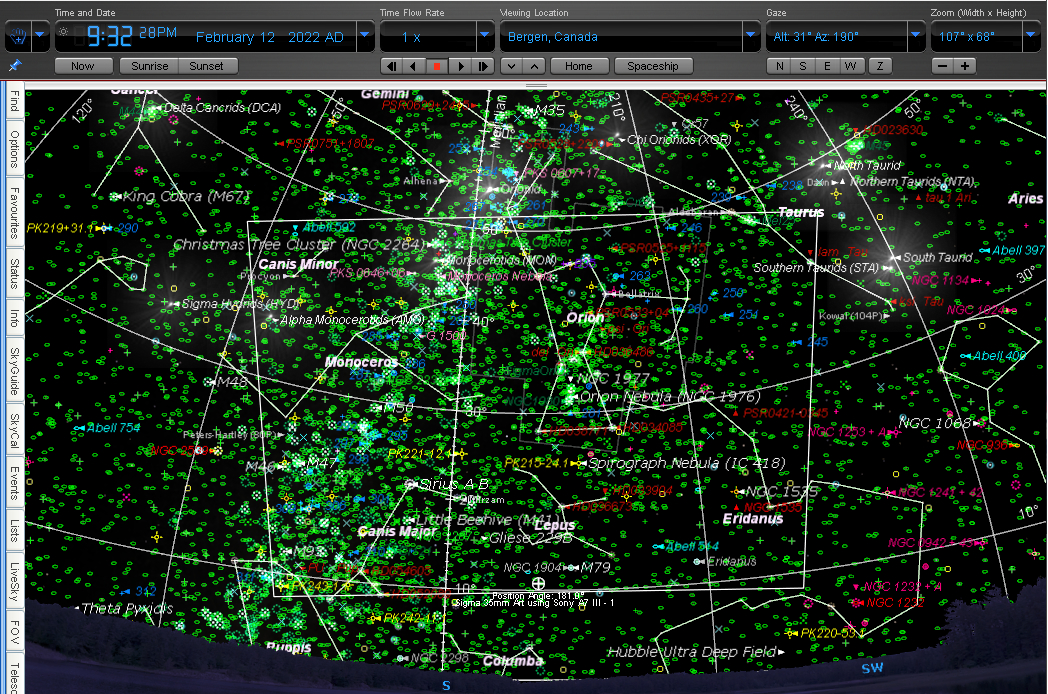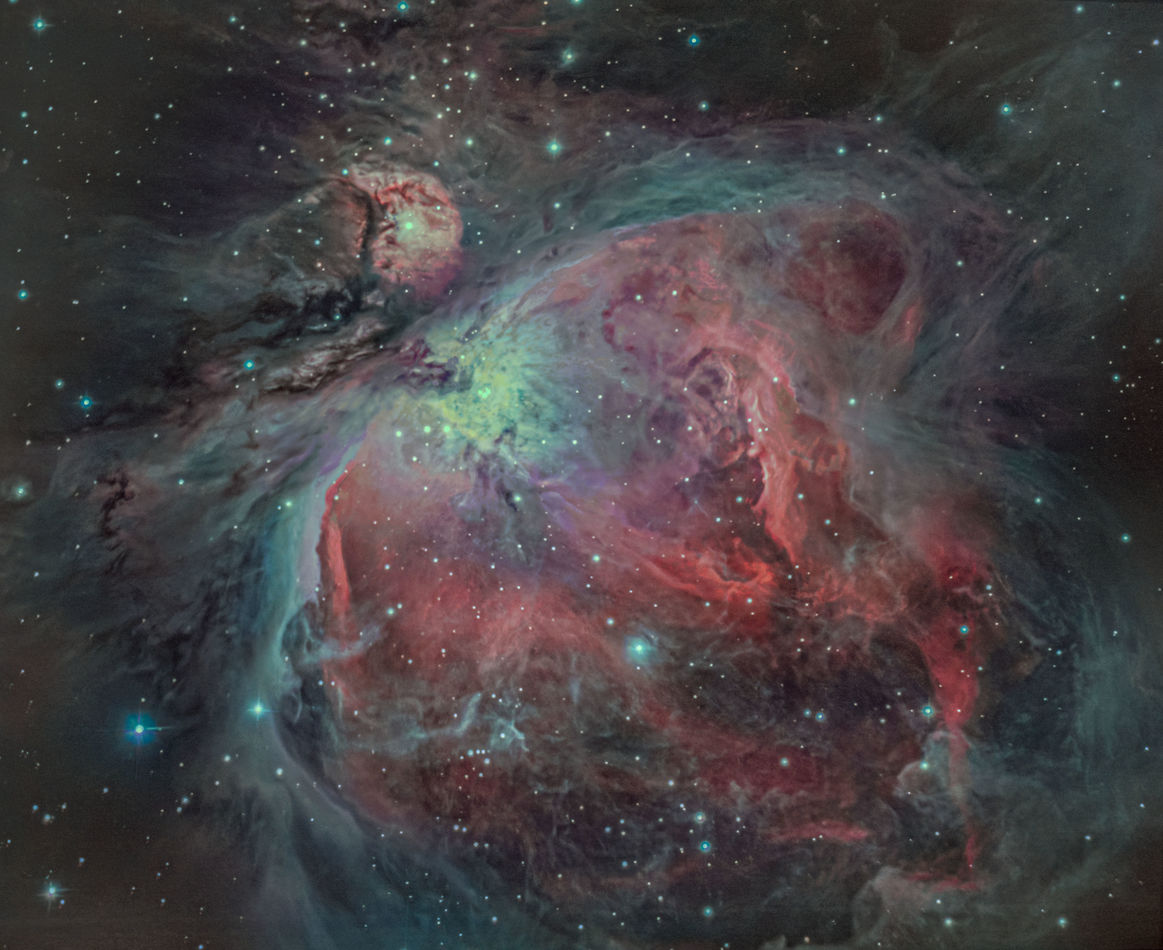The (Great) Orion Nebula
Feb 11, 2022 16:18:02 #
The (Great) Orion Nebula (also known as Messier 42) is a diffuse nebula situated in Orion's Belt in the constellation of Orion. It is ~1,344 light-years (7,900,872 billion miles) away from Earth and is the closest region of massive star formation to Earth. The Orion Nebula is one of the most intensely studied and photographed objects in the night sky. The nebula has revealed much about the process of how stars and planetary systems form from collapsing clouds of gas and dust, and protoplanetary disks and brown dwarfs have been directly observed within the nebula.
The Orion Nebula is visible with the naked eye even from areas affected by some light pollution. It is seen as the middle "star" in the "sword" of Orion, which are the three stars located south of Orion's Belt. The “star” appears fuzzy to sharp-eyed observers but the nebulosity is obvious through binoculars or a small telescope.
The Orion Nebula contains a very young open star cluster, known as the Trapezium due to the asterism of its primary four stars. Two of these can be resolved into their component binary systems on nights with good seeing, giving a total of six stars. The stars of the Trapezium, along with many other stars in the nebula, light up the gas in the Orion Nebula.
The attached image is a composite of five images shot over the past decade with several cameras and several lenses/scopes. I'd shoot some new subs but the weather has been the pits for the past 15 months sort of putting a damper on astro-imaging.


Enjoy!
bwa
The Orion Nebula is visible with the naked eye even from areas affected by some light pollution. It is seen as the middle "star" in the "sword" of Orion, which are the three stars located south of Orion's Belt. The “star” appears fuzzy to sharp-eyed observers but the nebulosity is obvious through binoculars or a small telescope.
The Orion Nebula contains a very young open star cluster, known as the Trapezium due to the asterism of its primary four stars. Two of these can be resolved into their component binary systems on nights with good seeing, giving a total of six stars. The stars of the Trapezium, along with many other stars in the nebula, light up the gas in the Orion Nebula.
The attached image is a composite of five images shot over the past decade with several cameras and several lenses/scopes. I'd shoot some new subs but the weather has been the pits for the past 15 months sort of putting a damper on astro-imaging.



Enjoy!
bwa
Feb 11, 2022 16:45:27 #
Feb 12, 2022 02:58:30 #
Ballard
Loc: Grass Valley, California
bwana wrote:
The (Great) Orion Nebula (also known as Messier 42... (show quote)
Neat shot of Orion. You did a great job with keeping the core intact and showing the trapezium while also showing the dim outer nebula in great detail.



Feb 12, 2022 12:17:12 #
Ballard wrote:
Neat shot of Orion. You did a great job with keeping the core intact and showing the trapezium while also showing the dim outer nebula in great detail.






Thanks. It has been a multi-decade undertaking.
bwa
Feb 12, 2022 18:22:18 #
Feb 12, 2022 19:38:38 #
alberio wrote:
Exquisite detail. How low in the sky is it up there in the north?
About 30°
bwa

Feb 12, 2022 20:17:51 #
Feb 18, 2022 15:28:36 #
If you want to reply, then register here. Registration is free and your account is created instantly, so you can post right away.


